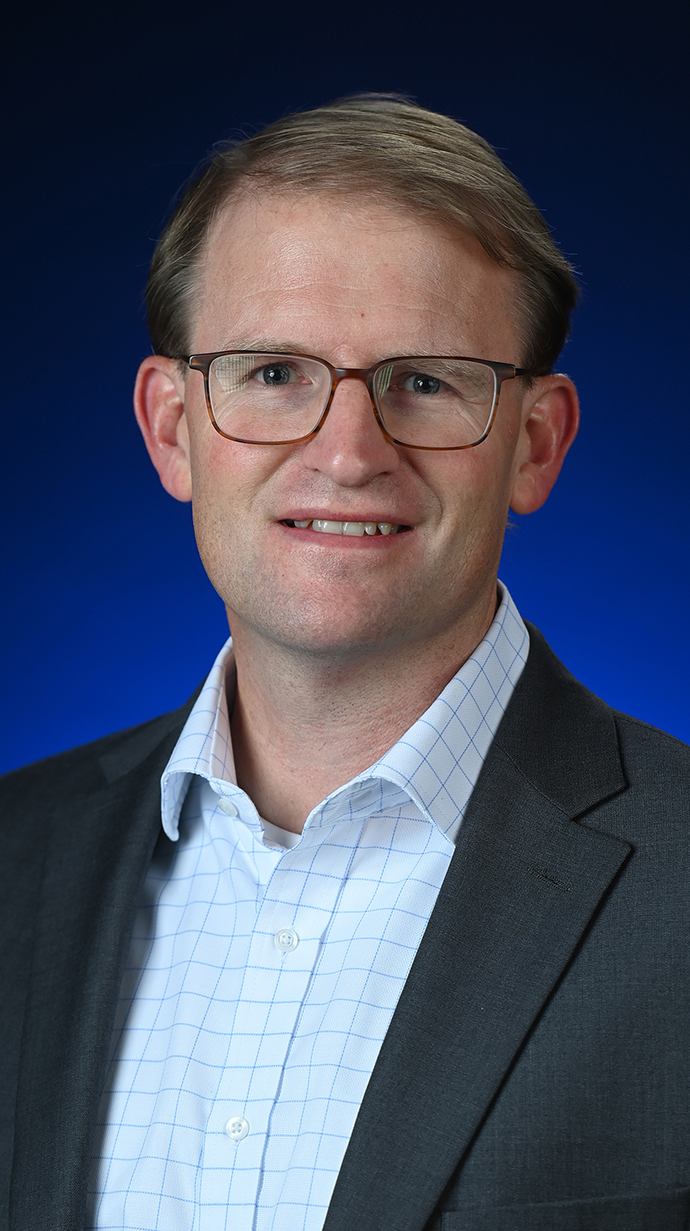Aeroacoustics Researcher Builds Upon Legacy as NCPA Director
Nathan Murray brings research excellence, family history to position
OXFORD, Miss. – For Nathan Murray, being named director of the University of Mississippi's National Center for Physical Acoustics was a "momentous full-circle moment."
"I remember when the acoustics building was being built; I remember my grandfather giving us a tour when the framing was going up," Murray said. "Becoming director of the NCPA is more than just a career achievement; it's something that is of great personal significance to me as well."
The National Center for Physical Acoustics serves as a leading national hub for expertise and innovation in physical acoustics. Established by Congress in 1986, the center provides coordination for major acoustics research initiatives, educational opportunities for students and direct research support to investigators around the world.
"The work of NCPA has a long history of enhancing the ability of society to utilize acoustic technologies," said Noel Wilkin, provost and executive vice chancellor for academic affairs. "To continue this trajectory, we rely upon the outstanding researchers and scientists to continue to push the boundaries of what we know about acoustic science and its applications."
As NCPA leader, Murray plans to focus on maintaining the center's world-class research expertise in physical acoustics, built up over the years by previous directors such as Henry Bass and scientists such as his grandfather.

While the NCPA was established by Congress to serve as a national resource for acoustics research, many first-time visitors mistakenly associate acoustics with musical instruments and audio equipment, Murray said. Another of his priorities is to help the public understand how the study of acoustics can contribute to multiple areas, such as the ability to understand complex materials, integrate smart acoustic devices into autonomous systems, improve propulsion systems, enhance drug delivery and tackle a wide range of real-world challenges.
An accomplished aeroacoustics researcher, Murray is poised to build upon a legacy that his grandfather, F. Douglas Shields, began decades ago at Ole Miss as a founding scientist of the center.
Murray's introduction to the university began during childhood summers when his father, Lambert Murray, a physics professor at Harding University, would work alongside his grandfather in the lab.
"I would help my dad and granddad with acoustics research even then," he said. "I remember the acoustics measurements my grandfather had set up in Kennon Observatory prior to the acoustics building being built."
Murray received a bachelor's degree in mechanical engineering from Oklahoma Christian University before coming to UM for his master's and doctoral degrees in 2003 and 2006, respectively. He was one of three students in the first cohort to complete the School of Engineering's aeroacoustics doctoral program working as a research assistant to then-NCPA senior research scientist Larry Ukeiley.
After teaching for a year, Murray returned to Ole Miss in 2007, joining former NCPA director John M. Seiner's aeroacoustics research group as a research scientist. He led supersonic wind tunnel testing on payload bay aeroacoustics for modern tactical aircraft.
Following Seiner's untimely death in 2010, Murray assumed leadership of the aeroacoustics group and broadened the scope of the research work to include topics such as laser weapons, rocket propulsion, supersonic engines and turbulence dynamics in explosions.
Roger Waxler, NCPA principal scientist and research associate professor of physics and astronomy, has known Murray since he was in graduate school.
"Though he's an engineer, he shares a lot of the intellectual motivations that drive physicists," Waxler said. "He's energetic, cares about the future and cares deeply about the lab.
"I've watched him develop relationships inside and outside of the university for years, which is critical for the success of the NCPA. I'm delighted that he's director."
Murray credits the "incredible researchers" on his team for their work in elevating the center.
"I'm really excited to be leading such a great group of people at the NCPA," he said. "They spearhead our work across our four key research areas: infrasound and atmospheric acoustics, applied acoustics, geophysical acoustics, and aerospace aeroacoustics. It is an honor and privilege for me to work alongside them."
